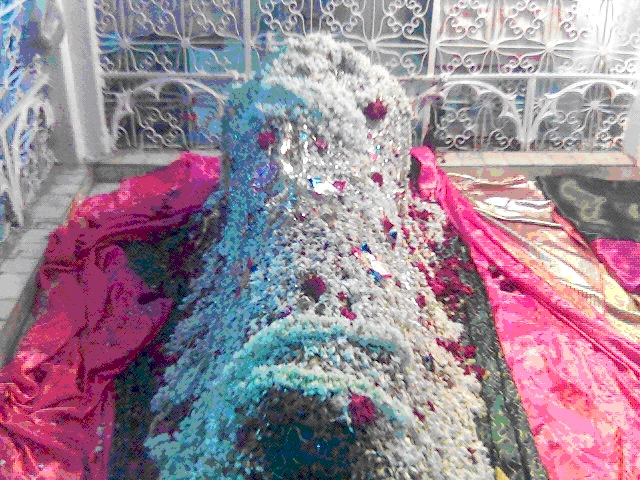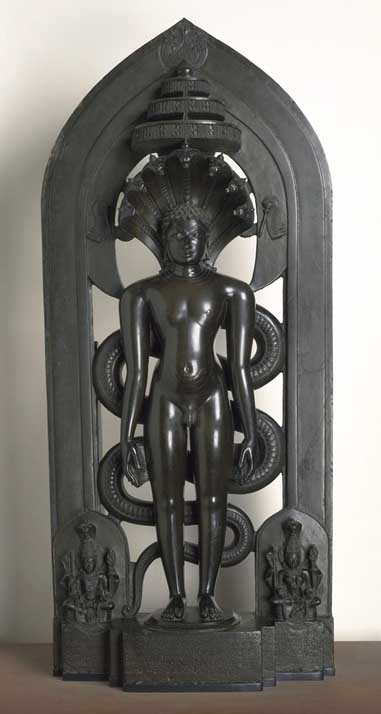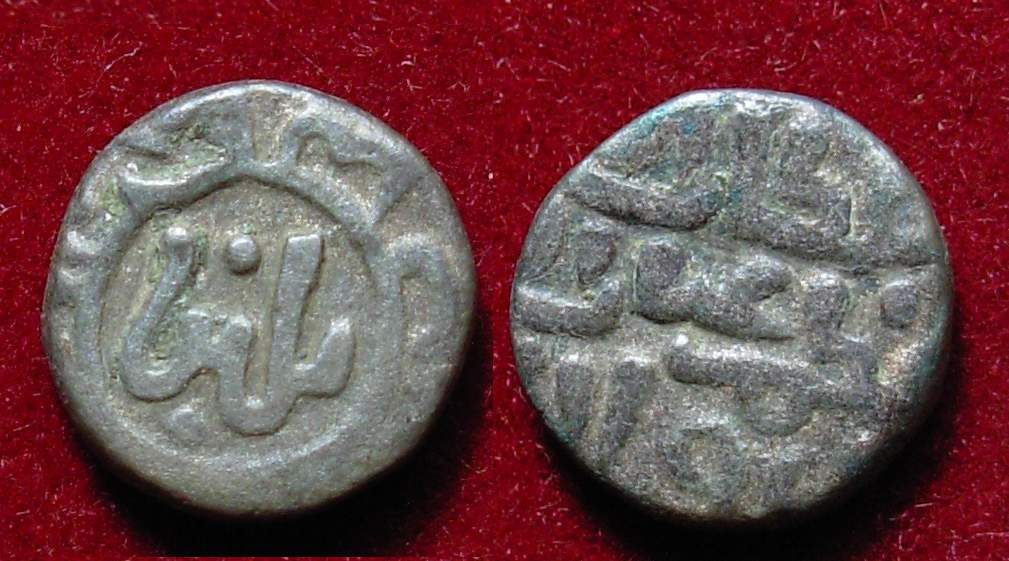|
Baba Hyder Vali Of Mulbagal
Syed Shah Baba Hayder e Safdar Husayni Suhrawardi was a 12th-century Sufi saint of Suhrawardi order. He was the disciple of Nathar Vali, Syed Shah Mutaharuddin Suhrawardi of Tirchy. His mausoleum is located in Mulbagal, Kolar District, Karnataka. Baba Hyder-e-Safdar Wali was original name was Syed Ismail who was a king of Sabhunat, Iran. After renouncing the world, he was inducted into Surwardy Sufi order by his spiritual master, Nathar Vali, Tabl-e-Aalam Badshah of Tirchy. When Baba Hyder-e-Safdar came to India it was the regime of Ghiyas ud din Balban in Delhi and Halebeedu Hoysala in Southern India. He settled in Mulbagal along with 300 Qalandariyya, Qalandars and his companions, Haji Makki and Baba Syed Fatehullah Shaheed, and began to spread the word of the Suharwardy Order. Baba died in 1269 (11th of Rajab, 668 Hijri). Baba Hyder-e-Safdar's first Urs sandal was anointed by Syedual Aaarifien Sultanul Masakin Qutubul Aqtaab Baba Fakruddin, Syed Khwaja Baba Fakhruddin of ... [...More Info...] [...Related Items...] OR: [Wikipedia] [Google] [Baidu] |
Suhrawardiyya
The Suhrawardiyya ( ar, سهروردية, fa, سهروردیه) is a Sufi order founded by Abu al-Najib Suhrawardi (died 1168). Lacking a centralised structure, it eventually divided into various branches. The order was especially prominent in India. The ideology of the Suhrawardiyya was inspired by Junayd of Baghdad (died 910) a Persian scholar and mystic from Baghdad. Under the Ilkhanate (1256–1335), the Suhrawardiyya was one of the three leading Sufi orders, and was based in western Iran. The order had its own '' khanaqahs'' (Sufi lodges), which helped them spread their influence throughout Persianate culture and society. The order included prominent members such as the Akbarian mystics Abd al-Razzaq Kashani (died 1329) and Sa'id al-Din Farghani (died 1300), and the Persian poet Saadi Shirazi Saadi Shīrāzī ( fa, ابومحمّد مصلحالدین بن عبدالله شیرازی), better known by his pen name Saadi (; fa, سعدی, , ), also known as Sadi of Shi ... [...More Info...] [...Related Items...] OR: [Wikipedia] [Google] [Baidu] |
Tirchy
Terchey is a village in the Leh district of Ladakh, India. It is located in the Nubra tehsil. Demographics According to the 2011 census of India The 2011 Census of India or the 15th Indian Census was conducted in two phases, house listing and population enumeration. The House listing phase began on 1 April 2010 and involved the collection of information about all buildings. Information ..., Terchey has 57 households. The effective literacy rate (i.e. the literacy rate of population excluding children aged 6 and below) is 62%. References {{Leh district Villages in Nubra tehsil ... [...More Info...] [...Related Items...] OR: [Wikipedia] [Google] [Baidu] |
12th-century Births
1 (one, unit, unity) is a number representing a single or the only entity. 1 is also a numerical digit and represents a single unit of counting or measurement. For example, a line segment of ''unit length'' is a line segment of length 1. In conventions of sign where zero is considered neither positive nor negative, 1 is the first and smallest positive integer. It is also sometimes considered the first of the infinite sequence of natural numbers, followed by 2, although by other definitions 1 is the second natural number, following 0. The fundamental mathematical property of 1 is to be a multiplicative identity, meaning that any number multiplied by 1 equals the same number. Most if not all properties of 1 can be deduced from this. In advanced mathematics, a multiplicative identity is often denoted 1, even if it is not a number. 1 is by convention not considered a prime number; this was not universally accepted until the mid-20th century. Additionally, 1 is the ... [...More Info...] [...Related Items...] OR: [Wikipedia] [Google] [Baidu] |
Penukonda
Penukonda also called Penugonda is a town in the Sri Sathya Sai district of Andhra Pradesh, India. It is 70 km away from Anantapur town. Demography According to ''The Imperial Gazetteer of India'', Penukonda was a subdivision and taluk of Anantapur district in Madras province. It contains 96 villages covering an area of 677 square miles. The population in 1901 was 92,482 compared with 81,104 in 1891. Penukonda was the headquarters with a population of 6,806. The Penner River flows along its western and Chitravati river along its eastern boundary. History This region was controlled at different points in history by the Hoysalas, Chalukyas, Vijayanagar, Nawabs, Maratha chieftain Murari Rao, Tipu Sultan, Nizam and eventually came under British Raj, British rule after it was ''ceded'' to the British by the Nizam of Hyderabad, India, Hyderabad. It was a melting pot of different religions but the town and fort were established by early Hoysala The Hoysala Empire was ... [...More Info...] [...Related Items...] OR: [Wikipedia] [Google] [Baidu] |
Baba Fakruddin
Syed Baba Fakhr al-Din Hassaini ul Hussaini (d. 1295 CE/ 694 AH) commonly known as Baba Fakhruddin was a Persian Sufi of Suhrawardiyya order from present-day Eastern Iran. Baba Fakhruddin was a disciple and successor of Pir Nathar Tabl e Aalam Badshah Natahar Vali of Tiruchirappalli. He was ''Shahanshaah'' (King of Kings) of Sistan and Shahpur of present-day Eastern Iran later abdicated the throne to take the path of Sufism. He was a direct descendant of Prophet Mohammed through Imam Hassain paternally and Imam Hussain maternally. He traveled on foot from Sistan to Tiruchirappalli via Makkah, Madina, Afghanistan, Kashmir, and Gujrat states of India where he was initiated into the Qalandariyya Suhrawardiyya order by his Murshid Tabl e Aalam Nathar Vali at Tiruchirappalli. He was later accorded spiritual succession by his murshid and was set to find his abode where the ''Miswak'' spurt leaves. Baba Fakhruddin made Penukonda his home and final resting place. Parentage & Ancesotor ... [...More Info...] [...Related Items...] OR: [Wikipedia] [Google] [Baidu] |
Qalandariyya
The Qalandariyyah ( ar, قلندرية), Qalandaris, Qalandars or Kalandars are wandering ascetic Sufi dervishes. The term covers a variety of sects, not centrally organized and may not be connected to a specific tariqat. One was founded by Qalandar Yusuf al-Andalusi of Andalusia, Spain. They were mostly in Iran, Central Asia, India and Pakistan. Starting in the early 12th century, the movement gained popularity in Greater Khorasan and neighbouring regions, including South Asia. The first references are found in the 11th-century prose text ''Qalandarname'' (The Tale of the Kalandar) attributed to Ansarī Harawī. The term ''Qalandariyyat'' (the Qalandar condition) appears to be first applied by Sanai Ghaznavi (died 1131) in seminal poetic works where diverse practices are described. Particular to the qalandar genre of poetry are terms that refer to gambling, games, intoxicants and Nazar ila'l-murd, themes commonly referred to as ''kufriyyat'' or ''kharabat''. The genre was fu ... [...More Info...] [...Related Items...] OR: [Wikipedia] [Google] [Baidu] |
Delhi
Delhi, officially the National Capital Territory (NCT) of Delhi, is a city and a union territory of India containing New Delhi, the capital of India. Straddling the Yamuna river, primarily its western or right bank, Delhi shares borders with the state of Uttar Pradesh in the east and with the state of Haryana in the remaining directions. The NCT covers an area of . According to the 2011 census, Delhi's city proper population was over 11 million, while the NCT's population was about 16.8 million. Delhi's urban agglomeration, which includes the satellite cities of Ghaziabad, Faridabad, Gurgaon and Noida in an area known as the National Capital Region (NCR), has an estimated population of over 28 million, making it the largest metropolitan area in India and the second-largest in the world (after Tokyo). The topography of the medieval fort Purana Qila on the banks of the river Yamuna matches the literary description of the citadel Indraprastha in the Sanskrit ... [...More Info...] [...Related Items...] OR: [Wikipedia] [Google] [Baidu] |
Ghiyas Ud Din Balban
Ghiyas ud din Balban (1216–1287, reigned: 1266–1287) ( ur, ); (Hindi: ग़ियास उद-दीन बलबन); (IAST: ''Ghiyās ud-Dīn Balban'') was the ninth sultan of the Mamluk dynasty of Delhi. Ghiyas ud Din was the ''regent'' of the last Shamsi sultan, Nasiruddin Mahmud. He got rid of his predecessor Imaduddin Raihan and also got rid of this rivals in the court. His original name was Baha Ud Din. He was an Ilbari Turk. When he was young he was captured by the Mongols, taken to Ghazni and sold to Khawaja Jamal ud-din of Basra, a Sufi. The latter then brought him to Delhi in 1232 along with other slaves, and all of them were purchased by Iltutmish. Balban belonged to the famous group of 40 Turkic slaves of Iltutmish. Ghiyas made several conquests, some of them as vizier. He routed the Mewatis that harassed Delhi and reconquered Bengal, all while successfully facing the Mongol threat, during which his son died. After his death in 1287, his grandson Qaiqab ... [...More Info...] [...Related Items...] OR: [Wikipedia] [Google] [Baidu] |
Nathar Vali
Sultan Syed Shah Mutaharuddin Suhrawardi (969–1039), also called Dada Hayat Mir Qalandar or Nathar Wali or Nadir Shah, was a Muslim mystic and preacher from the Middle East who migrated to Tamil Nadu in the 11th-century, where he travelled from area to area to preach the faith of Islam to the locals. - ''Nathar Wali (died in 1039) is supposed to be the earliest Muslim Sufi who dedicated his life to Islam in the south''. He came to Trichy in the 11th century; his shrine is located in Tiruchirapalli, Tamil Nadu, which according to legend is atop the grave of the three-headed Hindu demon Tiriasuran whom Dada killed. Early life According to the sources Tabl-e-Aalam Badshah was born as Syed Mutaharuddin in Anatolia region to the King of Bahanasa King Ahmed Kabeer and Syeda Fathimunnisa (Descendants of Prophet Muhammad through Ali and Husayn ibn Ali). He had an younger brother Syed Jalaluddin who became the King after he left the Kingdom for the journey of Sufism. Life in Tiruc ... [...More Info...] [...Related Items...] OR: [Wikipedia] [Google] [Baidu] |
India
India, officially the Republic of India (Hindi: ), is a country in South Asia. It is the seventh-largest country by area, the second-most populous country, and the most populous democracy in the world. Bounded by the Indian Ocean on the south, the Arabian Sea on the southwest, and the Bay of Bengal on the southeast, it shares land borders with Pakistan to the west; China, Nepal, and Bhutan to the north; and Bangladesh and Myanmar to the east. In the Indian Ocean, India is in the vicinity of Sri Lanka and the Maldives; its Andaman and Nicobar Islands share a maritime border with Thailand, Myanmar, and Indonesia. Modern humans arrived on the Indian subcontinent from Africa no later than 55,000 years ago., "Y-Chromosome and Mt-DNA data support the colonization of South Asia by modern humans originating in Africa. ... Coalescence dates for most non-European populations average to between 73–55 ka.", "Modern human beings—''Homo sapiens''—originated in Africa. Then, int ... [...More Info...] [...Related Items...] OR: [Wikipedia] [Google] [Baidu] |
Mulbagal
Mulabagilu is a town and taluk headquarters of Mulabagilu taluk in the Kolar district in the state of Karnataka, India. It lies just off the National Highway 75 as the easternmost town of the state and a hill landmark. Etymology "Mulabagilu" (ಮುಳಬಾಗಿಲು) comes from the word ''mudalabagilu,'' which means the "eastern door" in the native Kannada language. Mulabagilu was supposedly the easternmost frontier of (and thereby the entrance to) the state of Mysuru. History One legend describes how the Hanuman temple here was installed by Arjuna, one of the Pandavas, after the Mahabharata war. Sage Vasishta is believed to have installed the idols of the main deity Srinivasa, Padmavati and Rama-Sita-Lakshmana. The history of Mulabagilu was compiled by Benjamin Lewis Rice, in his book "The Gazetteer of Mysore" (1887). In modern history, Mulabagilu is mentioned as the site of the Battle of Mulabagilu on 4 October 1768, during the First Anglo-Mysore War. Geography Mulaba ... [...More Info...] [...Related Items...] OR: [Wikipedia] [Google] [Baidu] |




